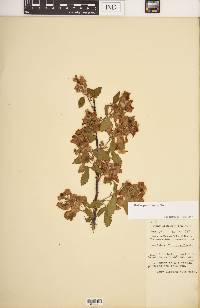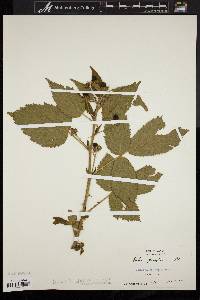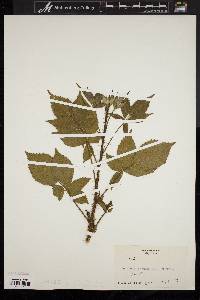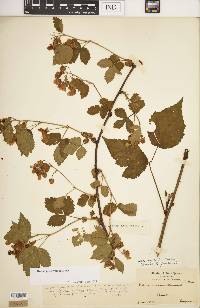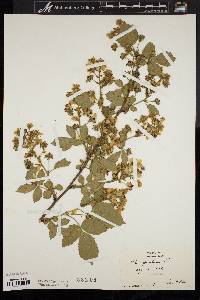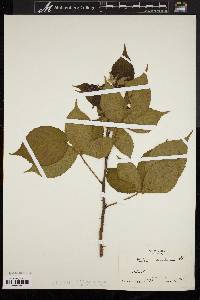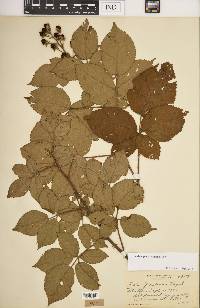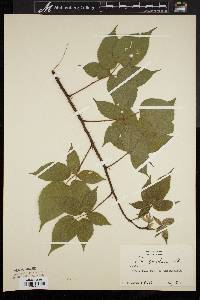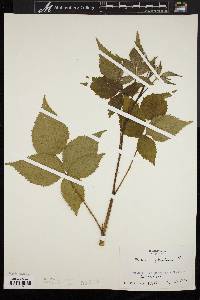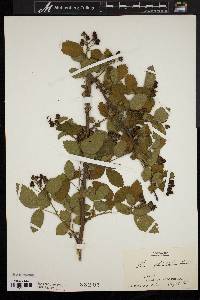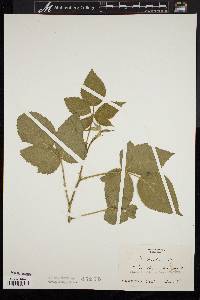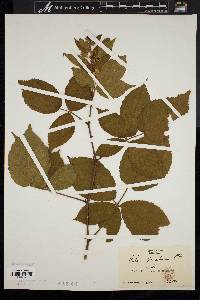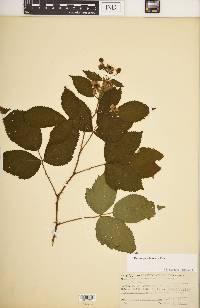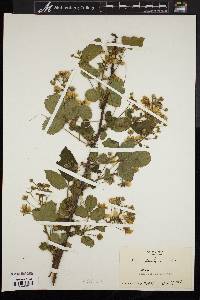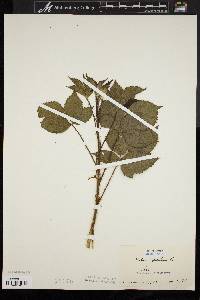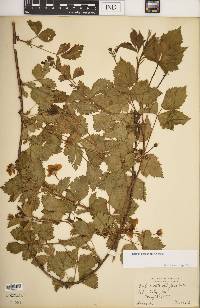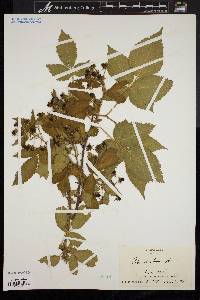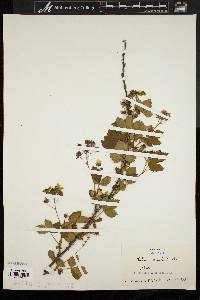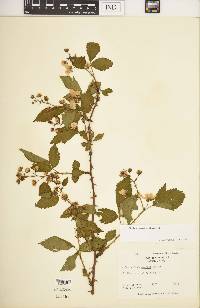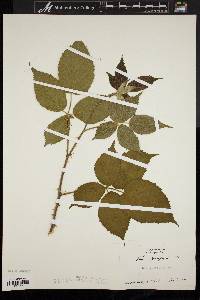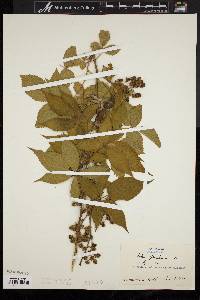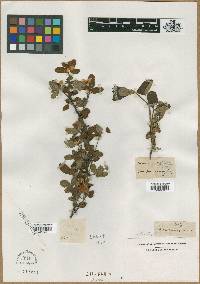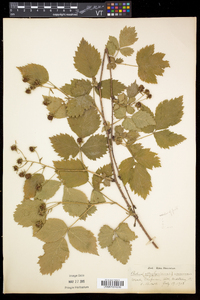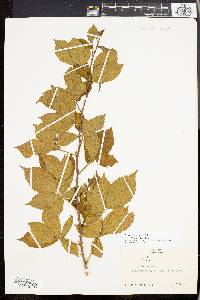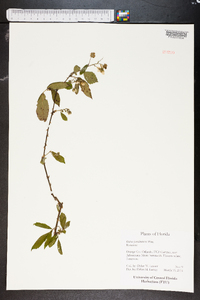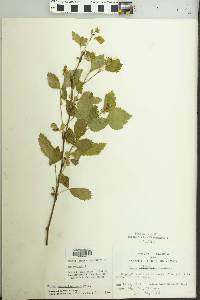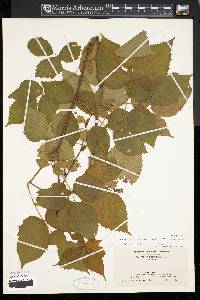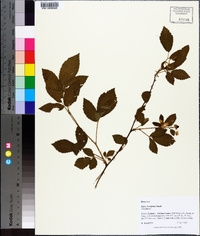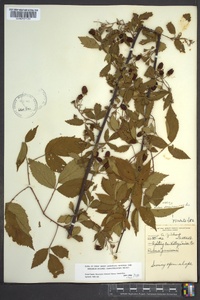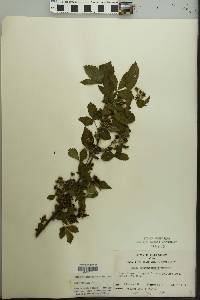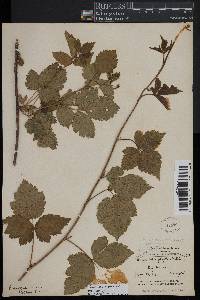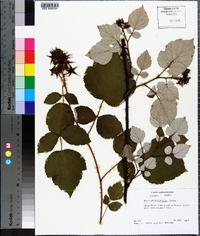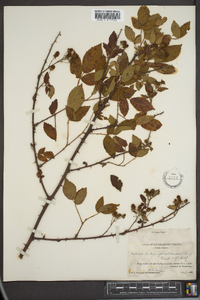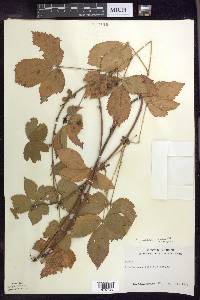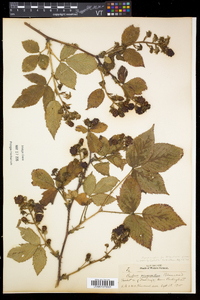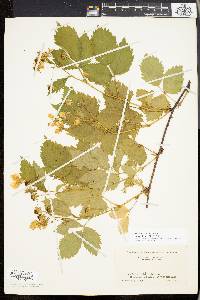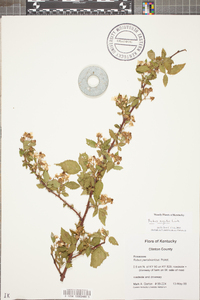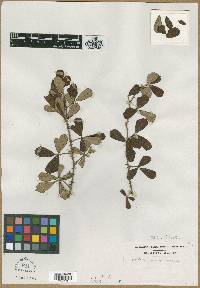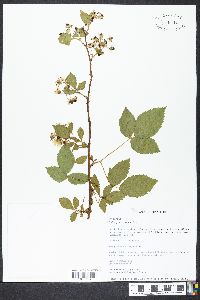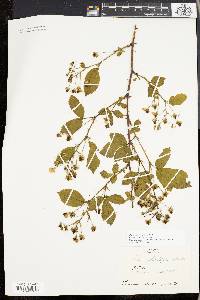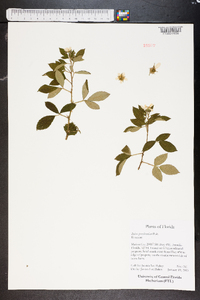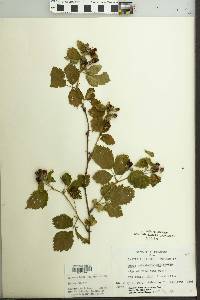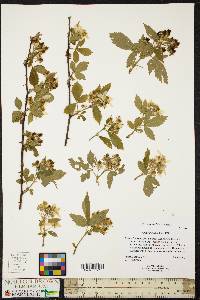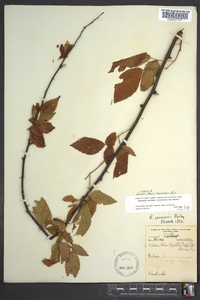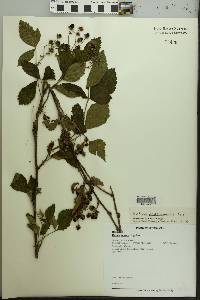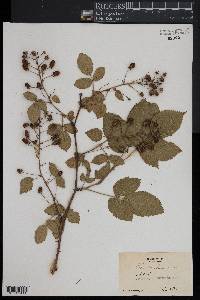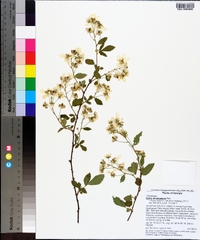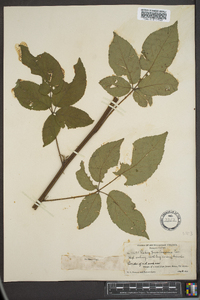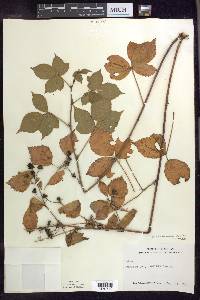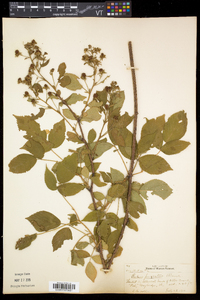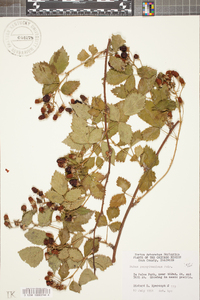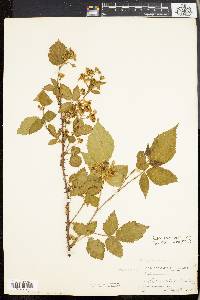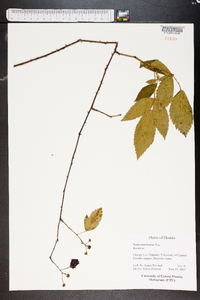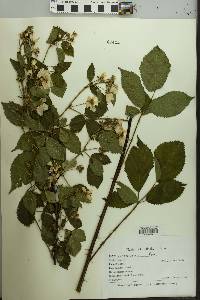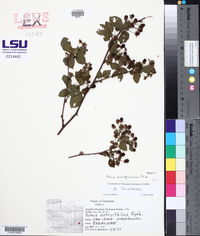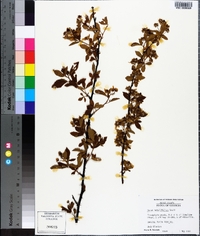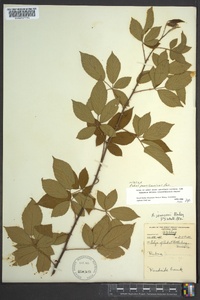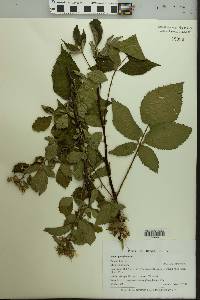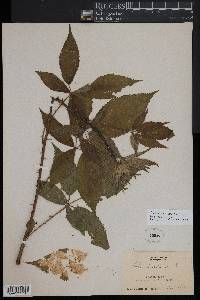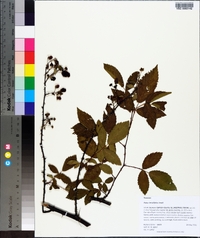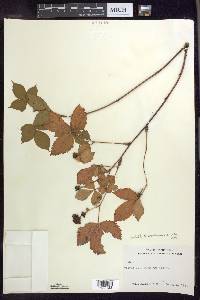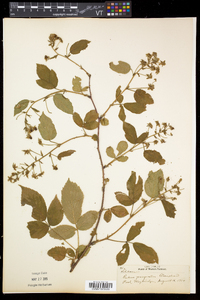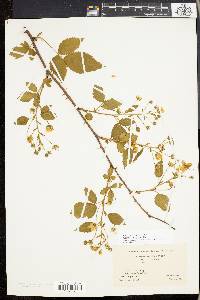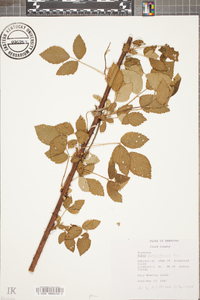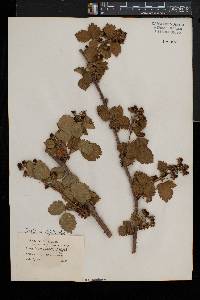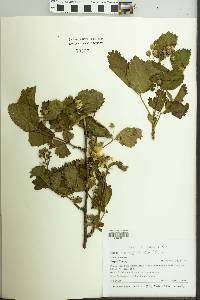Rubus pensilvanicus
|
|
|
|
Family: Rosaceae
Pennsylvania Blackberry
[Rubus amnicolus Blanch., moreRubus argutus var. scissus L.H. Bailey, Rubus balkei L.H. Bailey, Rubus insulans L.H. Bailey, Rubus pensylvanicus Poir, Rubus rossuergianus Blanch.] |
Stems usually stout, 1-3 m; armature of the primocanes of straight, spreading, or slightly reflexed prickles from an expanded base; shorter hooked prickles usually present on the petioles, often on the petiolules, and occasionally on the midveins and on the axis of the raceme, rarely in much weaker form on the pedicels; primocane lvs softly pubescent beneath, 3- or 5-foliolate; terminal lfl broadly ovate, 6-12 cm, half to nine-tenths as wide, broadest near or above to often well below the middle, distinctly acuminate, broadly rounded or subcordate at base, very coarsely and irregularly serrate to doubly serrate; floricane lvs usually with elliptic to rhombic or obovate lfls coarsely toothed above the middle, many of them simple and broadly ovate or subrotund; raceme usually short and compact, few-fld, well surpassing the lvs, varying to loose and open with long-pedicellate fls. Me. and N.H. to Minn., s. to Va., W.Va., Ind., and Mo. May-July. (R. acer; R. amnicola; R. associus; R. avipes; R. barbarus; R. bellobatus; R. bractealis; R. brainerdii; R. bushii; R. cardianus; R. condensiflorus; R. congruus; R. cupressorum; R. defectionis; R. dissitiflorus; R. facetus; R. floricomus; R. floridus; R. frondosus; R. independens; R. insulanus; R. latifoliolus; R. libratus; R. multispinus; R. ostryifolius; R. pauxillus; R. perfoliosus; R. philadelphicus; R. praepes; R. pratensis; R. recurvans; R. subsolanus; R. wisconsinensis) Gleason, Henry A. & Cronquist, Arthur J. 1991. Manual of vascular plants of northeastern United States and adjacent Canada. lxxv + 910 pp. ©The New York Botanical Garden. All rights reserved. Used by permission. Similar species: Page is under construction. Please see link below for general information on the genus Rubus. Flowering: late May to mid July Habitat and ecology: Common in moist or dry habitats including overgrazed woods, along woodland borders, brushy pastures, and degraded bogs and fens. Occurence in the Chicago region: native Etymology: Rubus is the Latin name for bramble and also means red. Pensilvanicus means "from Pennsylvania." Author: The Morton Arboretum From Flora of Indiana (1940) by Charles C. Deam [Rubus pensilvanicus group = Inflorescences, petioles, etc. bearing few, if any, glandular-hairs; flower clusters short-racemiform or corymbiform, but not long-racemiform. Deam's treatment includes five species currently lumped under R. pensilvanicus.] [Rubus abactus (floral leaflets very strongly sharp-serrate):] Of our upright blackberries this species is the most arching and widest spreading, often almost as wide as long. Rather frequent in northern Indiana and in the "flats" of the southeastern part, elsewhere it is usually infrequent. It prefers moist habitats but is also found in dry habitats. The foliage is variable. The typical and most prevalent form has leaflets with nearly regularly serrate margins, but there is also a form with sharply toothed or jagged margins. The latter form is common in Lagrange County. [Rubus argutus (plants not very prickly, leaflets of primocanes broad-lanceolate, only thinly pubescent beneath):] This species is frequent throughout the southern part of the state where it is found in white clay soil in low ground and on high ground mostly with beech and sugar maple. [Rubus frondosus (floral leaflets with broad, triangular or even obtuse teeth):] Probably found more or less frequently throughout the state, growing mostly in dry soil. [Rubus impar (canes more or less erect, prickles few):] This species so far is known only from the type locality which is an open, level, post oak woods just southeast of Half Moon Pond about 10 miles southwest of Mt. Vernon, Posey County. The soil of the area is a hard, white clay and is infertile and sparsely wooded mostly with post oak and an occasional black oak. The plants are slender and usually 3-5 feet high, with a few short side branches and a slightly curved summit. [Rubus laudatus (inflorescence with prominent simple leaves):] Bailey cites two of my specimens, one from a low, flat woods in Posey County 5 miles south of Caborn and one from sandy soil on the Claypole Hill in Knox County. …… Indiana Coefficient of Conservatism: C = 5 Wetland Indicator Status: UPL |


